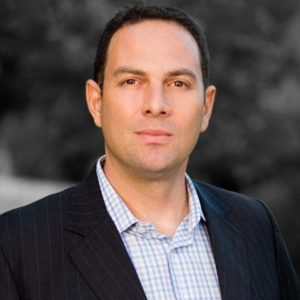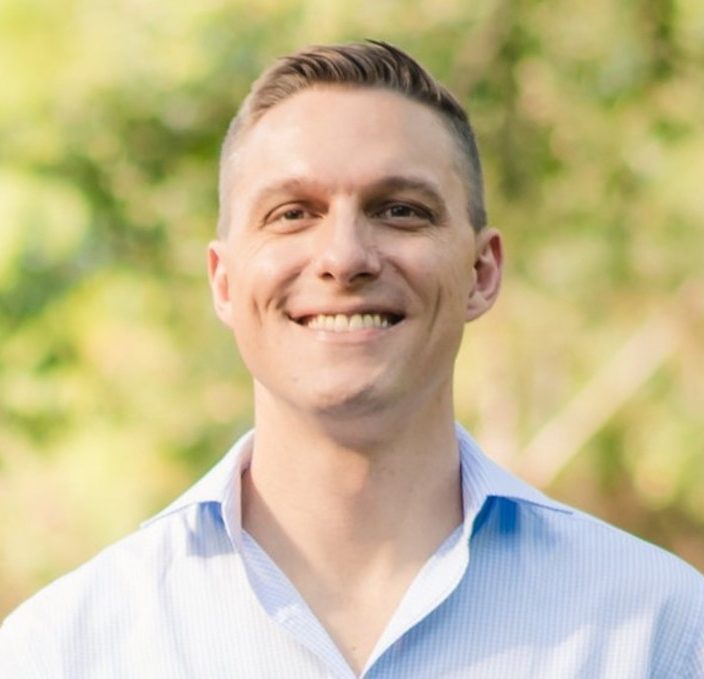Is There A Different Way to Schedule Surgeries? | SurgiSnacks Episode 1
Listen On :
Do you ever feel like there’s hidden money in your surgical scheduling process? In the first episode of SurgiSnacks, your hosts Al Norweb and Justin Rockman show you how to uncover potential savings and revenue opportunities that may be hiding right under your nose. Using real-world examples, they break down some of the common inefficiencies and bottlenecks that can plague surgical practices and offer actionable insights to help you identify and quantify these issues. Whether you’re still using paper scheduling systems or just looking to optimize your current processes, this episode provides practical guidance for uncovering the $100k (or more) that could be hiding in your surgical scheduling process. Now those are some sweet savings.
Related content:
- How to Organize Surgery Scheduling
- Eight Best Practices in Surgical Scheduling and Coordination
- Ten Tips to Improve the Surgery Scheduling Process
- Why Adding A Surgical Scheduling Platform to Your Tech Stack is Essential
- Four Foolproof Ways to Prevent Surgery Cancellations
- Losing the Paper Weight: Can Software Improve the Patient Experience?
- The Complete Guide to Surgery Cancellation Fees for Practices
- Disadvantages of an EHR For Surgery Scheduling
- How To Improve Block Utilization For Surgical Practices
- The Case for Centralized Scheduling
Join us for SurgiSnacks, the podcast that delivers bite-sized insights into the world of surgical coordination. Hosted by Al & Justin of Surgimate, the surgical coordination software company, each episode features practical tips and best practices for streamlining your surgical practice, enhancing your profitability, and improving the patient experience. Subscribe on YouTube, Spotify, or Apple Podcasts.
Hello, and welcome to the
very first Surgisnack podcast.
My name is Al Norweb.
I am the Chief Growth officer of Surgimate.
Hi, and I’m Justin Rockman, the VP of Biz Dev
here at Surgimate.
And together we are two mates
who love to nerd out about surgical coordination.
A couple of weeks ago, Justin and I
were on the road, as we often are.
We get to visit practices all around the country,
learn about how they
manage their surgery business.
And we were just discussing that we get to see
a lot of things, and we have a lot of
ideas around how this part of surgery practices
gets run, and that maybe we have
some insights to share with
an audience who might be interested in listening.
That’s right, Al.
Hopefully we really can.
And we also know that our would be listeners are very
busy folks in a very busy practice in very busy world.
We figured that we’ll do this in
short snackable five to ten-minute recordings,
hence the genesis of SurgiSnacks.
So our plan is to produce many of these sessions and
to leave you with some bite sized insights that may help
you in your day-to-day, and for each session.
also bring along a really yummy tasty treat.
So, Al, what is our tasty treat today?
So, Justin, we were just at a great trade show,
and as a concession item,
we were offering Dippin’ Dots,
and the people at the show liked it so much
that we thought, hey, what a great way to start.
So I’ve got some tasty Dippin’ Dots.
I’m enjoying some cookies and cream today, one of
the OG flavors, and the topic for today is
how to ‘Dip in’ to uncover revenue that’s just
hiding in plain sight in your surgery business.
Okay, so whilst you’re enjoying that Dippin Dots, my
first question, Al, is you’ve now been six months
here at Surgimate as our Chief Growth Officer,
and before that, you spent many years working in
the world of medical devices and the EHR world.
Please share some of your early impressions about
what you’ve learned as you get to know
more about our surgical coordination processes, but more
about our Surgimate customers.
Well, it’s a great question, Justin.
I am so excited to be at Surgimate,
and one of the things I really love about
it is that there’s a tremendous market need.
And that’s actually, like, the number one observation,
I think, is that as we’ve gone to
a variety of different surgical practices in a
variety of different surgical specialty areas, there’s one
thing that’s almost always true.
Surgical coordination is a sloppy, messy business.
And most practices have underinvested in this part of
their business for years, even though it is literally
part of the factory floor to produce one of
the most important revenue streams in their business.
And so it’s almost categorically true that you go
to a practice and you go, wow, I can’t
believe the way that they’re doing this today.
Right.
And the other part of that too, Justin, that’s pretty
surprising, is I think most of the folks we talk
to just say they don’t think they have a problem.
They know it’s messy, but if you ask them,
like, hey, how much is this costing you?
Is this really a problem for your business?
They can’t really articulate it, and they just sort
of assume, hey, this is a cost of business,
and this is the way it should be.
So I think those are two things that really
kind of stand out to me based on it’s
still early, but things that I’ve been learning as
I’ve been getting to talk to practices.
Let me ask you, Justin, in return, since you’ve
been with Surgimate for, like, 13 years, so you’ve
been doing this since, like, Reagan Senior.
You’ve seen a lot of evolution, I would assume.
What do you think is different about
this part of the business of surgical
care today versus maybe ten years ago?
Right. Well, thanks, Al.
I know I’m old, but I’m not that old.
But really truthfully, the way in which many
practices work today is a bit like during
the Truman administration or even maybe Lincoln.
As you said, the challenges I’m still seeing today are
very similar to what they were over a decade ago.
Still too much manual entry, paper
processing, sticky notes, faxes and whatnot.
But looking at the landscape, I think one of the
biggest changes I’m seeing today is a recognition
that you need to be able to get more with less.
And this is very true in
the area of surgical coordination.
Managers are realizing they can reorganize their
processes and get more efficient and more
profitable from their surgical scheduling teams.
I’ve even heard surgical practice managers
say, our aim is to turn
our surgical schedulers into revenue generators.
So in practice, insurer practices are looking at this
area as an opportunity area for their organization.
Now, you mentioned earlier that practices don’t even
seem to know that they have the real
problems, that it’s the cost of doing business.
Can you give a couple of tangible
examples of what you mean by that?
Yeah, one of the first things that stands
out to me is you ask a practice,
well, how much are cancellations costing you?
And they’ll say, well, if it’s canceled, no big deal.
They’ll get rescheduled down the line,
and, yeah, maybe there’s an RCM impact,
but no big deal.
I’ll tell you, when we get to work
with practices, Justin, and actually look at their
data, they don’t reschedule the number of patients
they think by a long mile.
And so there is a huge revenue leakage issue that
I think practices have, and they don’t realize it.
And I also think, relatedly,
since they don’t have any
systems or standard processes behind a lot of this,
they don’t know where the errors occur
and what causes it.
But they do know that they often have a
patient satisfaction problem because patients really don’t
like their surgeries to be canceled late in the game, or
they don’t like showing up to a surgery center
and the surgery center being like, wait, I don’t
have you on the books today.
Because that happens at practices, right?
And so they don’t often equate the
impact that has on their reputation and
on patient satisfaction when those things happen.
So those are just a couple of examples.
There are a lot more, but I
know we have a short session.
So I’ll ask you, Justin, based on our expertise
and your expertise over the years, what are some
of those metrics that you would like practices to
actually be measuring and looking at to help them
understand this part of their business better?
So, firstly, it’s really critical to know that there
are metrics which you can look into, and I
think there are four which we focus in on
cancellation rates, and more importantly,
the avoidable cancellation rates.
What number of cases have been rescheduled?
What is your block time utilization?
And four, what is the
FTE burden around surgical coordination?
And sometimes practices really have a hard
time extracting and finding that data.
What are some of the practices or ideas that you’ve
had and worked with in order to make it easy
for practices to capture and extract that data?
Yeah, if there’s anything you take from
today’s SurgiSnack is, I hope you
take a little bit of potential homework.
So here’s some things I think practice can do
that’s relatively lightweight, no more than 1 or 2
hours, just to see, hey, do I actually have
some issues here in my process that are worth
actually pinning down and try to fix?
So the first one you just
mentioned, FTE costs, relatively easy exercise.
Figure out how many FTEs you have today
dedicated to surgical coordination between schedulers
themselves, pre-cert
team, maybe patient financials or customer stat, or
parts of your billing team.
If you add those folks up and just look at the Ft
salary burden of those people, I think most practices
don’t put that whole PNL together as one and
look at it to see,
am I getting enough out of what I spend on this?
Because it’s often a pretty large number.
So that’s one that is relatively easy to do.
A second thing that I think is really worth looking
into is going back to that assumption around reschedules.
It can be hard in modern systems to
kind of really track the exact reschedule rate.
So here’s an idea you could use if you have
an ASC, you can work with your ASC manager to
look at the last two, three, four months of data
and just pull out all the cancellations that happen.
It’s usually pretty easy to get that data.
And if a standard ASC, maybe two, three,
four operating rooms, you’re talking about maybe 100
canceled cases over that period of time.
It’s not a big exercise to go
through those and just check how many
of those patients actually got rescheduled.
We find that that data is very surprising to practices.
Like, it can be lower than 50%.
If you take that to your doctors or you
take that to other folks in your management team,
I’m pretty sure that you all agree that’s not
good and you want to try to fix that.
So that’s kind of a way to identify, like,
hey, there’s some real opportunity here for my business.
I have other ideas, but I
know we’re keeping today’s session.
You said 50%, right?
Yeah. We have practices where we saw
as low as 30%, Justin.
Only 30% of ASC cases their own owned ASCs
actually got rescheduled after the fact, after a cancellation.
So it’s a lot of money that’s lost.
So you’re good with numbers, Justin, I
know there’s other metrics, you mentioned the
top, but this topic of today’s discussion
is uncovering $100,000 in value per physician.
So do a little math for us here.
How can some of these surgical
scheduling opportunities equate to that?
Two things to observe, and I think this
is what we try to focus on.
The first is around the operational efficiency.
Practices are spending somewhere between $50 to $60,000
per physician per year on coordination staff.
And we know that between 40% to 50% of
the time they spent booking surgery is redundant.
Eliminate that time, and you’re easily
saving $20 to $25,000 per physician.
Point number two around cancellations and rescheduling.
10-15% of cases are canceled, and a high
percentage of those cases are canceled
for avoidable reasons.
And we also know, secondly, that if those
cases get canceled, then there’s a very high
percentage they’re not going to get rescheduled.
Tighten your processes and
find ways in which you can
add two to four cases per month per surgeon.
And with 2500 dollars a case
in collections, that is well in excess of $100,000.
So finally, that’s the $100,000.
That’s how we got to it.
How is it that we can get practices
who are looking into these areas to take
some tangible steps,
tangible actions to make change?
Good question, Justin, but I have to
say, I think we have reached our
caloric intake for today’s SurgiSnack.
Since we’re trying to keep this tight, how about I
propose we do that for another session,
at an upcoming date?
Perfect. Good idea.
So until next time, keep on dippin’.
Yeah, absolutely, Justin.
And to our audience.
I hope you found today’s session interesting.
We love your feedback
and your comments and ideas
for other things you’d like to hear about.
And we’ll try to keep producing these
and bringing some tasty snacks and always
love spending time with you, Justin.
So thank you very much.
Thank you.
Thanks, Al.
You have a great day.
meet the hosts

Justin Rockman
VP of Business Development
The industry expert on surgical scheduling workflow optimization, Justin consults for surgical practices and lectures nationwide. Justin joined Surgimate after 8 years as a founding member of an IBM-acquired startup. A devoted husband and father of four, ultra-marathoner and lover of the outdoors, Justin studied law at Monash University and earned his MBA from Bar Ilan University.

Al Norweb
Chief Growth Officer
Al Norweb is focused on everything and anything that brings the power of Surgimate to more surgical practices. Al mostly recently served as the General Manager of Orthopedics for a leading EHR and practice management software company where he oversaw a near quadrupling of their book of business. Based in Miami, FL, Al holds an MBA from Harvard Business School, an MPA from Harvard Kennedy School, and a BS in Economics from Duke University.
be our guest?
Would you like to be part of our next podcast episode? If so please contact us for more details.








